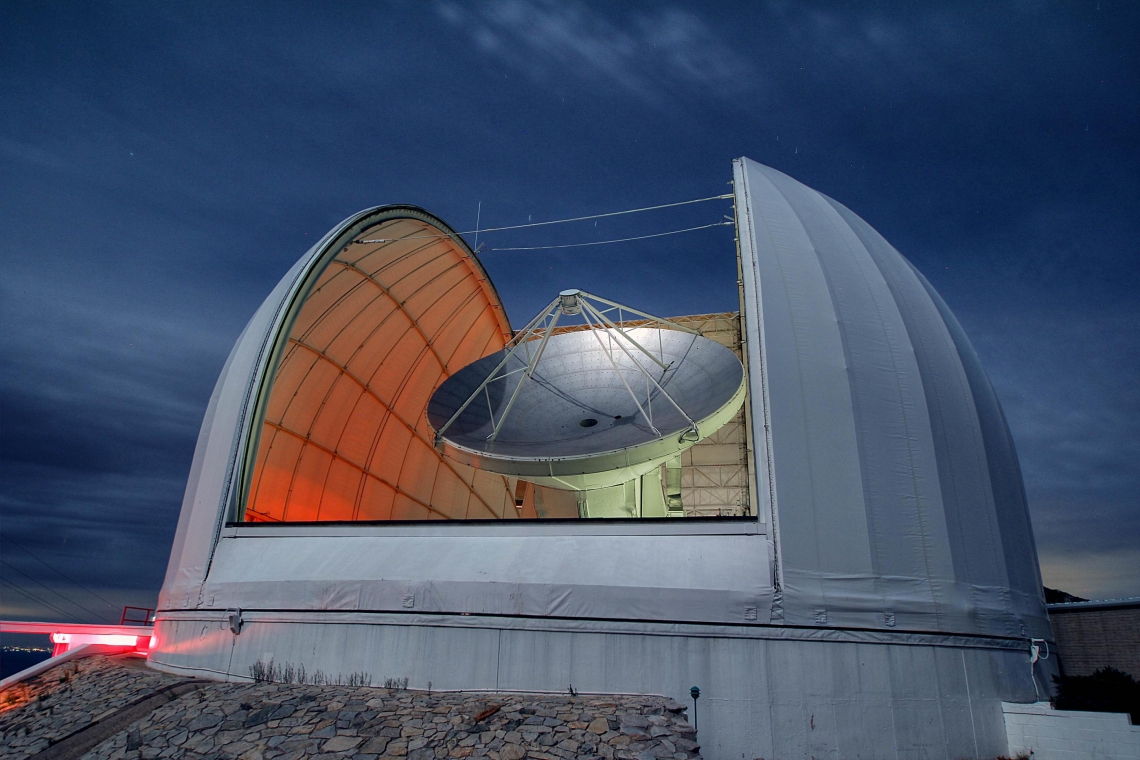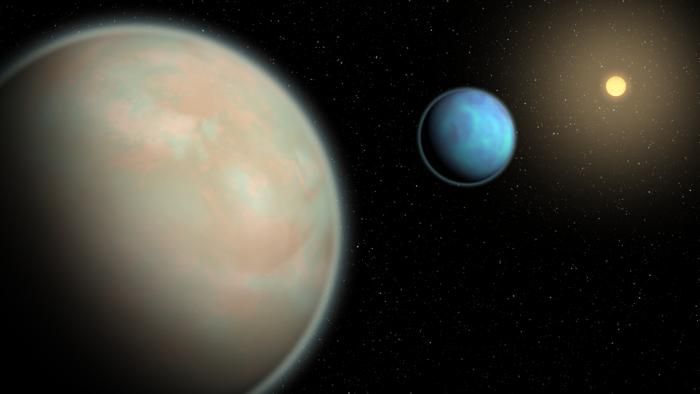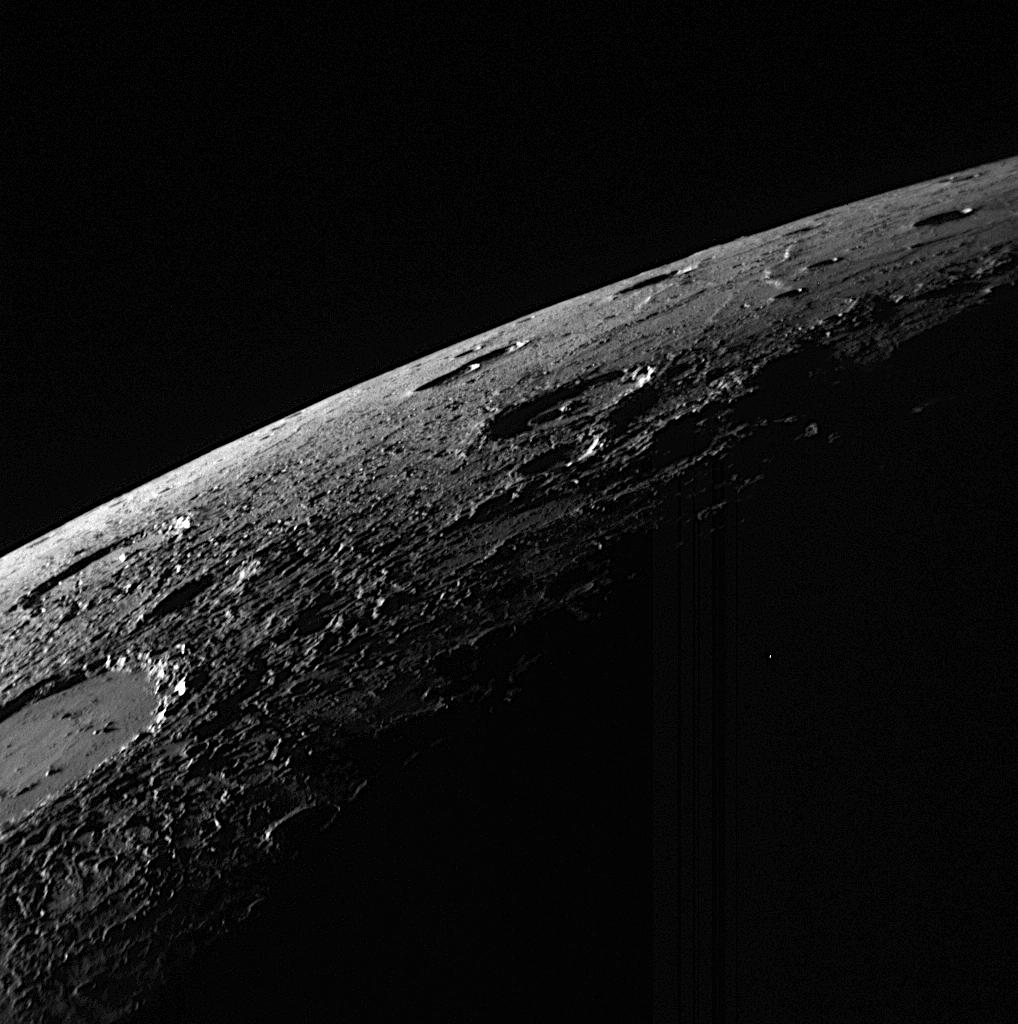-
The case of the missing phosphorous: Astronomers detect life

By Daniel Stolte, University Communications Today University doctoral students used two radio telescopes, including the Arizona Radio Observatory 12-meter radio telescope on Kitt Peak, to make the discovery. Tom Folkers/Steward Observatory Astronomers at the University of Arizona have discovered excephosphorus, a critical ingredient for life as we know it, in an unexpected location: the outskirts…
-
The case of the missing phosphorus: Astronomers find life ingredient

By Daniel Stolte, University Communications Today University doctoral students used two radio telescopes, including the Arizona Radio Observatory 12-meter radio telescope on Kitt Peak, to make the discovery. Tom Folkers/Steward Observatory Astronomers at the University of Arizona have discovered excephosphorus, a critical ingredient for life as we know it, in an unexpected location: the outskirts…
-
Exoplanet ‘haze’ makes it harder to identify water on alien worlds. Scientists may have a solution

One of the primary tasks of the James Webb Space Telescope (JWST) is to scan the atmospheres of exoplanets for signs of habitability. And, as far as we know, water is necessary for life. So naturally, detecting the presence of water in and around alien worlds is a high priority for planetary scientists. There is,…
-
JWST Reveals a Newly-Forming Double Protostar

As our newest, most perceptive eye on the ongoing unfolding of the cosmos, the James Webb Space Telescope is revealing many things that were previously unseeable. One of the space telescope’s science goals is to expand our understanding of how stars form. The JWST has the power to see into the cocoons of gas and…
-
Gravitational waves discovery topic of Dec. 6 Oregon State Science Pub

CORVALLIS, Ore. – The discovery related to gravitational waves which made international headlines earlier this year and was predicted by Albert Einstein more than a century ago will be the topic of Oregon State University’s Science Pub on Dec. 6. Jeff Hazboun, an astrophysicist at Oregon State and one of the scientists who led the…
-
Solar maximum: Why April’s total Solar Eclipse will bring unique views of the sun’s corona
A dramatic view of the sun at’ solar maximum’ will await eclipse-chasers on April 8, 2024, during North America’s total solar eclipse. Only those within a 125-mile (200 km) wide path of totality can glimpse the sun’s corona — its hotter outer atmosphere — with their naked eyes during totality. Only during the exact moment…
-
Solar maximum: Why April’s total Solar Eclipse will bring unique views of the sun’s corona
A dramatic view of the sun at’ solar maximum’ will await eclipse-chasers on April 8, 2024, during North America’s total solar eclipse. Only those within a 125-mile (200 km) wide path of totality can glimpse the sun’s corona — its hotter outer atmosphere — with their naked eyes during totality. Only during the exact moment…
-
SpaceX rockets keep tearing blood-red ‘atmospheric holes’ in the sky, and scientists are concerned
A large streak of red light left behind when a SpaceX rocket punched a hole in the ionosphere above Arizona in July. (Image credit: Jeremy Perez) De-orbiting SpaceX rockets are smashing temporary holes in the upper atmosphere, creating bright blobs of light in the sky. Now, scientists have warned that these “SpaceX auroras,” which look…
-
Do Glaciers on Mercury Suggest Such a Planet Could Be Habitable?

NASA’s Messenger shot this view over Mercury’s horizon shortly before making its closest approach to the innermost planet of the solar system.NASA / JPL-Caltech Data on Mercury collected by NASA’s Messenger orbiter continue to yield new results long after the end of the mission in 2015. In the latest and perhaps most surprising result, scientists…
-
The many mysteries NASA can solve on a mission to Uranus

Blue-green Uranus may not look like much through a telescope, but you can see its small disk at magnifications of 100x and more. Even this close-up look from the Voyager 2 spacecraft fails to reveal much detail. Credit: NASA/JPL. Uranus, the seventh planet from the Sun, orbits in the outer solar system, about two billion miles…